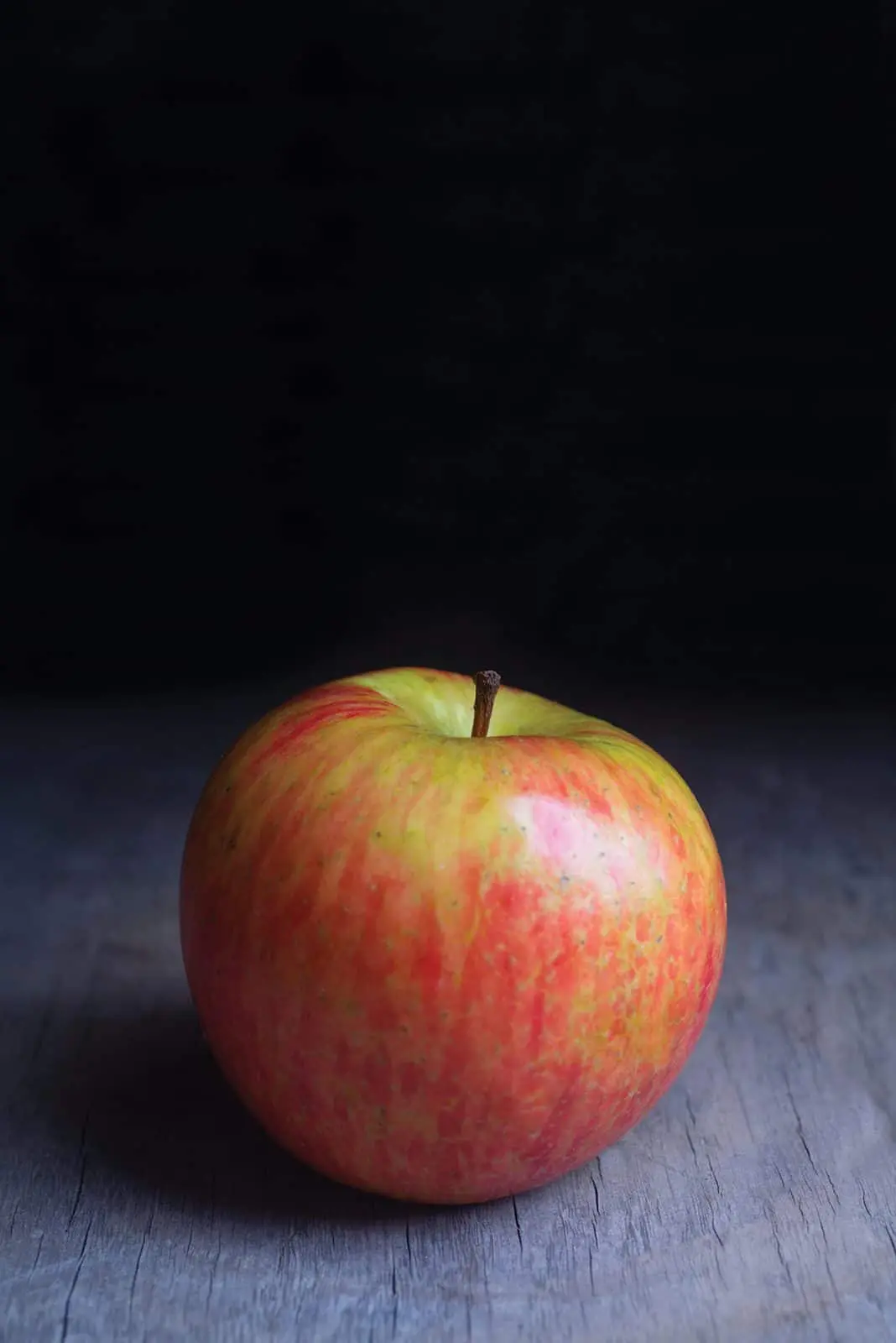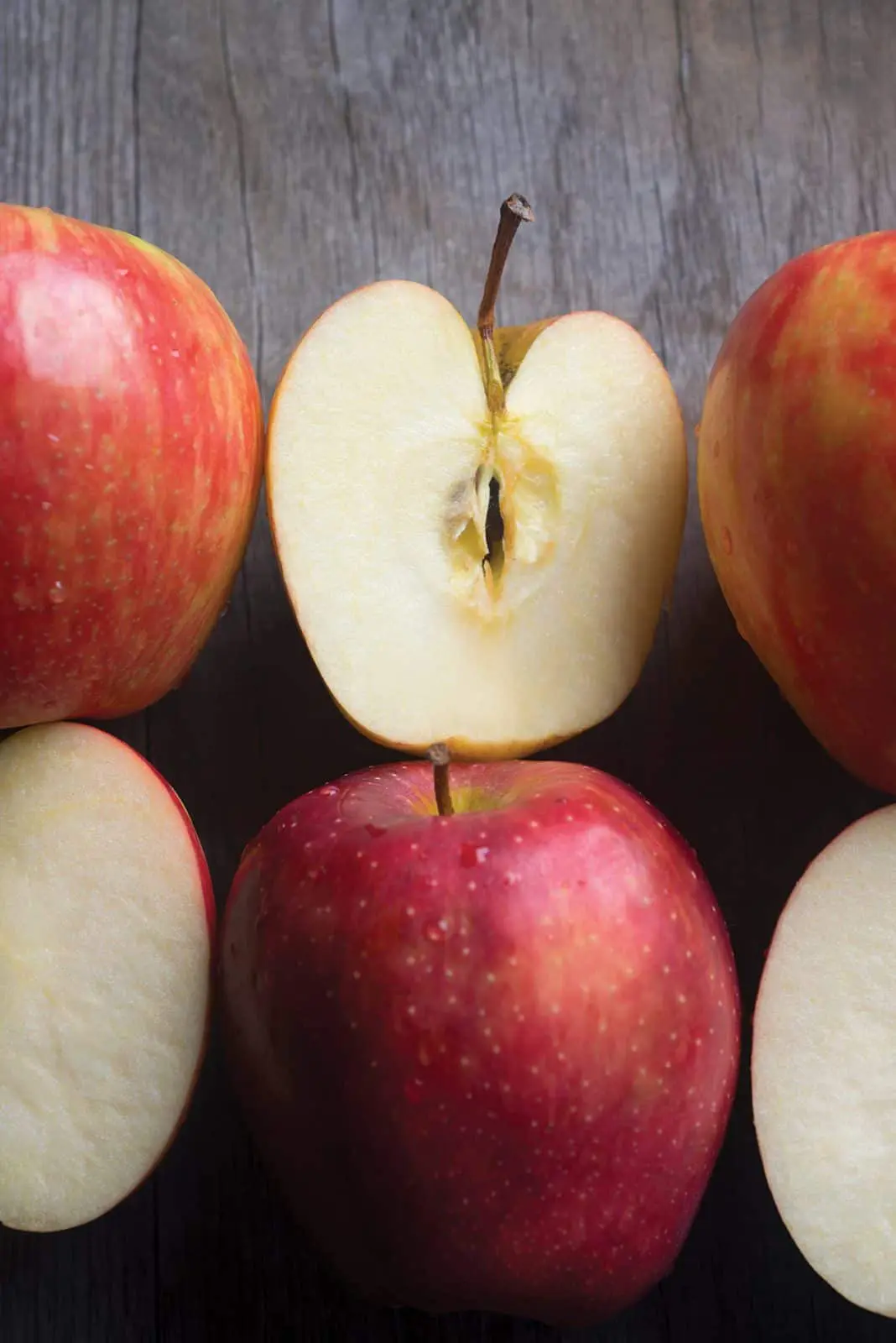By Jonah Lisa Dyer // Photography by Paulette Phlipot
—
Just down the road from my house in Victor, on the way to town, stands a lone apple tree. It’s my friend Jenny’s tree—her Grandma Ruby’s at one time—and my seasonal bellwether. In late September, when the fruit is pink and ripe and the branches are beginning to sag, I know summer is truly over and autumn has arrived.
Nobody in Jenny’s family can remember how old the tree really is or when it finally decided to bear fruit, but Jenny started harvesting apples from it when her three grown sons where just little squirts. They’d drive to Grandma Ruby’s tree and set up a ladder in the bed of their pick-up. Then they’d gather as many apples as they could, while eating their fill. Back home, Jenny used her grandmother’s apple sieve to make homemade applesauce that the kids would eat throughout the fall. This sweet memory and family tradition is one her children carry with them now that they’re older. And it’s a healthy one, too.
Long before health food was a thing or people were eating paleo, keto, or vegan, apples were the real deal. In fact, the phrase “An apple a day keeps the doctor away” has its roots in a popular 1800s Welsh proverb: “Eat an apple on going to bed, and you’ll keep the doctor from earning his bread.” But the health benefits of apples were discovered long before that. Ancient Anglo-Saxons and Romans may not have had any idea what antioxidants, phytonutrients, flavonoids, and dietary fibers were (apples have them all), but they knew, through experience and instinct, that apples were just plain good for your body.
“Apples are a nutritional powerhouse,” says local nutrition and health coach Cynthia Clausen. “Their high fiber slows down the absorption of sugar, which can help with obesity-related problems like heart disease, stroke, and diabetes.” Apples, she says, are a close number two, just behind berries, for phytonutrients, which act as antioxidants and fight free radicals. “Our molecules oxidize over time, just like a car or bike will rust if it’s left outside. When our molecules oxidize, we can get anything like wrinkles (from the breaking down of skin cells) to certain cancers. Apples provide the phytonutrients our bodies need to protect our DNA molecules from oxidation.”
Apples even show up in ancient Ayurveda. Local Ayurvedic practitioner Suzanne Leusch of Victor explains why: “Due to their astringent and cooling nature they can be cleansing to the palate and scraping to the digestive system.” According to Ayurvedic teachings, the health benefits you reap from apples depend on your body’s individual nature, or dosha. “Eaten raw, in excess, may not be the best for those who are [already] dry and cold themselves,” she says. But add cinnamon or cardamom (warming spices) and stew them, and apples become soothing to cooler body constitutions, aiding in both digestion and elimination. “Apples dispel the excessive heat in the body that accumulates during the hot summer months,” Leusch explains. “For this reason, they are the perfect food as summer turns to fall. Nature always provides an appropriate antidote.”
“Fruits and vegetables ripen when we are perfectly ready to eat them,” agrees Clausen. “In the fall, we need the sugars from apples, berries, root vegetables, and nuts and seeds to store energy for the winter. In the spring and summer we need greens to cleanse our systems.”
While Western medicine looks at diet and disease from a completely different perspective, it reaches the same conclusion. A 2008 study in the Journal of Food Science suggests a daily diet that includes apples can play an important role in reducing neurodegenerative disorders like Alzheimer’s disease. A 2011 Dutch study found that eating apples might help prevent strokes by as much as 52 percent. And Florida State University researchers called apples a “miracle fruit” after discovering older women had 23 percent less LDLs (bad cholesterol) and 4 percent more HDLs (good cholesterol) after just six months of eating them.
“It’s amazing how beneficial apples are to your health,” Clausen says. “The newest studies also show they have a great effect on your gut by increasing your good bacteria.” It’s been proven that chemical messages produced by bacteria in the gut can kick-start the process that ultimately turns certain genes on or off—like those responsible for breast cancer or being overweight. Now that’s big medicine.”
So digest the information however you prefer: pithy homespun sayings, ancient Hindu medical systems, the advice of a seasoned health coach, or peer-reviewed scientific studies—they all agree. Apples do the body good. And there’s no better time than now to conduct some personal research, as the sun is shifting in the sky, the winds are changing, and autumn is upon us again.
I don’t have a cherished family apple tree or a special applesauce recipe like Jenny, but my family has built a wonderful tradition of our own around her tree. After school is back in session each fall, on our way home we slide up next to the apple tree and roll down the car windows. The kids lean out—arms reaching—and each picks one perfectly ripe apple. An after-school snack straight off the tree is a special memory I hope they’ll have forever. I know Jenny approves, and I like to think Grandma Ruby would, too.
Curried Chicken Soup with Apples and Leeks
—
3 pounds bone-in, skin-on chicken pieces or 1 whole chicken, quartered
Salt and pepper
5 tablespoons butter, divided
3 leeks, cut lengthwise, washed, and thinly sliced (include 1-inch of green)
1 cup local mushrooms, sliced
2 tart apples (like Granny Smiths) cored, peeled, and cut into ½-inch cubes
1 cup apple juice
½ cup apple cider vinegar
3 cups chicken broth
1 tablespoon curry powder
½ cup heavy cream
- Season the chicken with salt and pepper.
- Melt 2 tablespoons butter over medium heat in a soup pot or Dutch oven. Add the chicken, skin down, and cook for 8 minutes. Turn the chicken and lightly brown other side for 5 minutes. Remove chicken from the pot and set aside.
- Add another 2 tablespoons butter to the pot (if needed) and sauté the leeks and mushrooms for 5 minutes, over medium heat, until soft but not browned.
- Add the chicken back into the pot. Add the apples, apple juice, apple cider vinegar, and broth.
- Bring everything to a slow simmer. Cover and simmer gently until chicken is completely cooked, 10 to 15 minutes. (Use a ladle to skim fat or froth that rises to the top.)
- Remove chicken, let cool, discard skin, and pull the meat away from the bone. Shred the meat into 1/2-inch pieces and return it to the pot.
- In a small saucepan whisk 1 tablespoon curry into 1 tablespoon melted butter; incorporate on medium heat, until fragrant. Stir the mixture into the soup.
- Add the heavy cream. Bring the soup to a simmer, season it with salt and pepper to taste, and cook for approximately 2 more minutes.
- Divide the soup evenly into bowls and serve with toasted 460Bread.
Yogahealer’s Stewed Apples
—
Recipe borrowed from Cate Stillman’s Seasonal Detox Diet (yogahealer.com)
—
1 apple, cored, peeled, and chopped in ½-inch cubes
¼ cup water
Cinnamon
- Simmer all ingredients in a small covered saucepan until they reach the softness of your liking.
- Remove from heat and allow mixture to rest.
- Serve over oatmeal for breakfast or vanilla ice cream for dessert. (This last suggestion is not particularly Ayurvedic or healthy, but it’s incredibly delicious).
—
Note: Consider other tasty (and healing) additions like 1 tablespoon butter or ghee, 5 whole cloves, a handful of raisins, or a few slices of fresh ginger.




